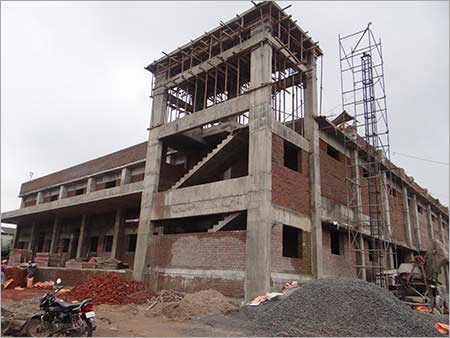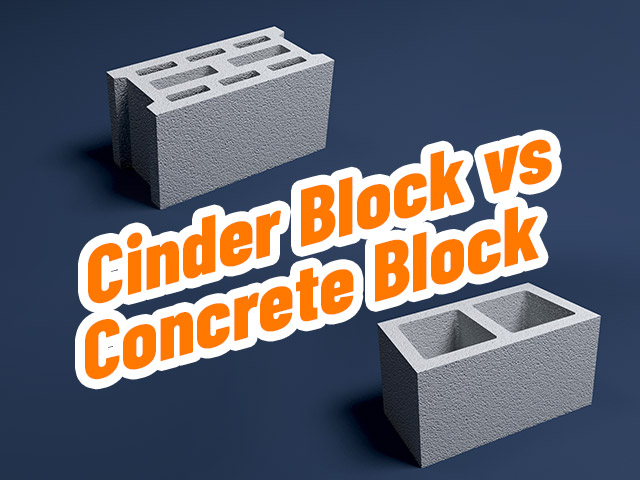Table of Contents
Introduction
The slump test is the most commonly used method of measuring the consistency of concrete which can be employed either in a laboratory or at the site of work. It is not a suitable method for very wet or very dry concrete. It does not measure all factors contributing to workability, nor is it always representative of the placability of the concrete.
However, it is used conveniently as a control test and gives an indication of the uniformity of concrete from batch to batch. Repeated batches of the same mix, brought to the same slump, will have the same water content and water-cement ratio, provided the weights of aggregate, cement and admixtures are uniforms and aggregate grading is within acceptable limits.
Additional information on workability and quality of concrete can be obtained by observing the manner in which concrete slumps. Quality of concrete can also be further assessed by giving a few tappings or blows by tamping rod to the base plate. The deformation shows the characteristics of concrete with respect to the tendency for segregation.
Apparatus
The apparatus for conducting the slump test essentially consists of a metallic mould in the form of a frustum of a cone having the internal dimensions as under:
| Bottom Diameter | 20 cm |
| Top Diameter | 10 cm |
| Height | 30 cm |
The thickness of the metallic sheet for the mould should not be thinner than 1.6 mm. Sometimes the mould is provided with suitable guides for lifting vertically up. For tamping the concrete, a steel tamping rod 16 mm dia, 0.6 meter along with bullet end is used. The following figure shows the details of the slump cone apparatus.
Factors which influence the concrete slump test:
- Material properties like chemistry, fineness, particle size distribution, moisture
content and temperature of cementitious materials. Size, texture, combined grading, cleanliness and moisture content of the aggregates, - Chemical admixtures dosage, type, combination, interaction, the sequence of addition and its effectiveness,
- Air content of concrete,
- Concrete batching, mixing and transporting methods and equipment,
- The temperature of the concrete,
- A sampling of concrete, slump-testing technique and the condition of test equipment,
- The amount of free water in the concrete, and
- Time since mixing of concrete at the time of testing.
Method of Testing
The internal surface of the mould is thoroughly cleaned and freed from superfluous moisture and adherence of any old set concrete before commencing the test. The mould is placed on a smooth, horizontal, rigid and non-absorbent surface. The mould is then filled in four layers, each approximately 1/4 of the height of the mould. Each layer is tamped 25 times by the tamping rod taking care to distribute the strokes evenly over the cross-section. After the top layer has been rodded, the concrete is 5th off level with a trowel and tamping rod. The mould is removed from the concrete immediately by raising it slowly and carefully in a vertical direction. This allows the concrete to subside.
For detailed step-by-step guide about the procedure, read this article.
This Subsidence is referred to as SLUMP of concrete. The difference in level between the height of the mould and that of the highest point of the subsided concrete is measured. This difference in height in mm is taken as Slump of Concrete. ASTM measure the centre of the slumped concrete as the difference in height. ASTM also specifies 3 layers.
Types of Slump
The pattern of a slump is shown in Figure below. It indicates the characteristic of concrete in addition to the slump value. Based on the slump pattern, they can be divided in four types. They are-
- True Slump
- Zero Slump
- Collapsed Slump
- Shear Slump
1. True Slump
If the concrete slumps evenly it is called a true slump. True slump refers to a general drop of the concrete mass evenly all around without disintegration. This type of slump is most desirable.
2. Zero Slump
If concrete maintains the actual shape of the mould, it is called zero slump which represents stiff, consistent and almost no workability. It is very difficult to maintain a zero slump.
3. Collapse Slump
In a collapse slump, the concrete collapses completely. Only a true slump is of any use in the test. If a collapse slump is achieved, a fresh sample should be taken and the test repeated. A collapse slump will generally mean that the mix is too wet or that it is a high workability mix, for which the Flow Table Test is more appropriate.
4. Shear Slump
If one half of the cone slides down, it is called a shear slump. In case of a shear slump, the slump value is measured as the difference in height between the height of the mould and the average value of the subsidence. The shear slump also indicates that the concrete is non-cohesive and shows the characteristic of segregation.
The true slump is the only reliable condition to get an idea about the workability of concrete. If other types occur, the test should be repeated.
It is seen that the slump test gives fairly good consistent results for a plastic-mix. This test is not sensitive for a stiff-mix. In the case of dry-mix, no variation can be detected between mixes of different workability. In the case of rich mixes, the value is often satisfactory, their slump being sensitive to variations in workability. IS 456 of 2000 suggests that in the “very low’ category of workability where strict control is necessary, for example, pavement quality concrete (PQC) measurement of workability by determination of compacting factor will be more appropriate than slump and a value of 0.75 to 0.80 compacting factor is suggested.
The above is also suggests that in the “very high” category of workability, measurement of workability by determination of “flow” by flow test will be more appropriate. However, in a Iean-mix with a tendency of harshness, a true slump can easily change to shear slump. In such a case, the tests should be repeated.
Nominal Slump Values
Despite many limitations, the slump test is very useful on-site to check day-to-day or hour-to-hour variation in the quality of the mix. An increase in a slump may mean for instance that the moisture content of the aggregate has suddenly increased or there has been a sudden change in the grading of aggregate. The slump test gives the warning to correct the causes for change of slump value. The simplicity of this test is yet another reason, why this test is still popular in spite of the fact that many other workability tests are in vogue. The following table shows the nominal slump value for different degrees of workability.
| Code | Description of Book | Download Link |
|---|---|---|
| IS 4031-1988 (Part-XII) | Methods of physical tests for hydraulic cement, Part 12: Determination of air content of hydraulic cement mortar | Download |
| IS 10262-2009 | Guidelines for concrete mix design proportioning | Download |
| SP 23-1982 | Hand Book on Concrete Mixes | Download |
| IS 1199-1959 | Methods of sampling and analysis of concrete | Download |
| IS 516-1959 | Method of Tests for Strength of Concrete | Download |
| IS 13311-1992 (Part-I) | Method of Non-destructive testing of concrete, Part 1: Ultrasonic pulse velocity | Download |
| IS 13311-1992 (Part-II | Method of non-destructive testing of concrete-methods of test, Part 2: Rebound hammer | Download |
| IS 4990-2011 | Plywood for concrete shuttering work - Specification | Download |
| IS 9103-1999 | Specification for Concrete Admixtures | Download |
| IS 1077-1992 | Common Burnt Clay Building Bricks -Specification | Download |
| IS 5454-1978 | Methods of sampling of clay building bricks | Download |
| IS 3495-1992 (Parts 1 to 4) | Methods of tests of burnt clay building bricks: Part 1 Determination of compressive strength Part 2 Determination of water absorption Part 3 Determination of efflorescence, Part 4: Determination of warpage | Download |
| IS 1786-2008 | High strength deformed steel bars and wires for concrete reinforcement | Download |
| IS 432-1982 (Part - II) | Mild Steel and Medium Tensile Steel Bars and Hard-Drawn Steel Wire for Concrete Reinforcement, Part 2: Hard-Drawn Steel Wire | Download |
| IS 269 - 2013 | Specification for Ordinary Portland Cement, 33 Grade (Fifth Revision) | Download |
| IS SP23 - 1982 | Handbook on Concrete Mixes | Download |
| IS SP34 - 1987 | Handbook on Concrete Reinforcement and Detailing | Download |
| IS SP24 - 1983 | Explanatory Handbook on Indian Standard Code of Practice for Plain and Reinforced Concrete (IS 456:1978) | Download |
| IS SP16 - 1980 | Design Aids for Reinforced Concrete to IS 456:1978 | Download |
| IS 14687 - 1999 | Guidelines for falsework for concrete structures | Download |
| IS 14858 - 2000 | Requirements for compression testing machine used for testing of concrete and mortar | Download |
| IS 14959 - 2001 (part-I) | Method of Test determination of water soluble and acid soluble chlorides in mortar and concrete, Part 1: Fresh mortar and concrete | Download |
| IS 14959 - 2001 (part-II) | Method of Test determination of water soluble and acid soluble chlorides in mortar and concrete, Part 2: Hardened mortar and concrete | Download |
| IS 15388 - 2003 | Specification for Silica Fume | Download |
| IS 14345 - 1996 | Specification for autoclave apparatus | Download |
| IS 14687 - 1999 | Guidelines for falsework for concrete structures | Download |
| IS 12813 - 1989 | Method of analysis of hydraulic cement by atomic absorption spectrophotometer | Download |
| IS 12870 - 1989 | Method of Spmpling Calcined Clay Pozzalana- | Download |
| IS 13311 - 1992 (Part-I) | Method of Non-destructive testing of concrete, Part 1: Ultrasonic pulse velocity | Download |
| IS 13311 - 1992 (Part-II) | Method of non-destructive testing of concrete-methods of test, Part 2: Rebound hammer | Download |
| Is 12600 - 1989 | Specification for low heat Portland cement | Download |
| IS 12423 - 1988 | Method for colorimetric analysis of hydraulic cement | Download |
| IS 12303 - 1987 | Criteria for design of RCC hinges | Download |
| IS 12269 - 2013 | 53 grade ordinary Portland cement | Download |
| IS 12269 - 1987 | 53 grade ordinary Portland cement | Download |
Conclusion
The Bureau of Indian standards, in the past, generally adopted compacting factor test values for denoting workability. But now in the revision of IS 456 of 2000, the code has reverted back to slump value to denote the workability rather than compacting factor except for very low workability. It shows that the slump test has more practical utility than the other tests for workability.
I hope this article will help you. You may also want to see my other post from my Blog. If I have missed anything here, please let me know about that in the comment below this post.
Share it with your friends.
Happy Learning.
If you liked this article, then please help me to share this article with your friends through Facebook, Twitter, WhatsApp or Instagram. You can also find us on Facebook, Twitter, Instagram, Telegram Channel, YouTube Channel, and Pinterest. Also, Subscribe to our mailing list to get a new post update from us. And, do me a favour, if you find this post helpful, rate a 5 star below-





